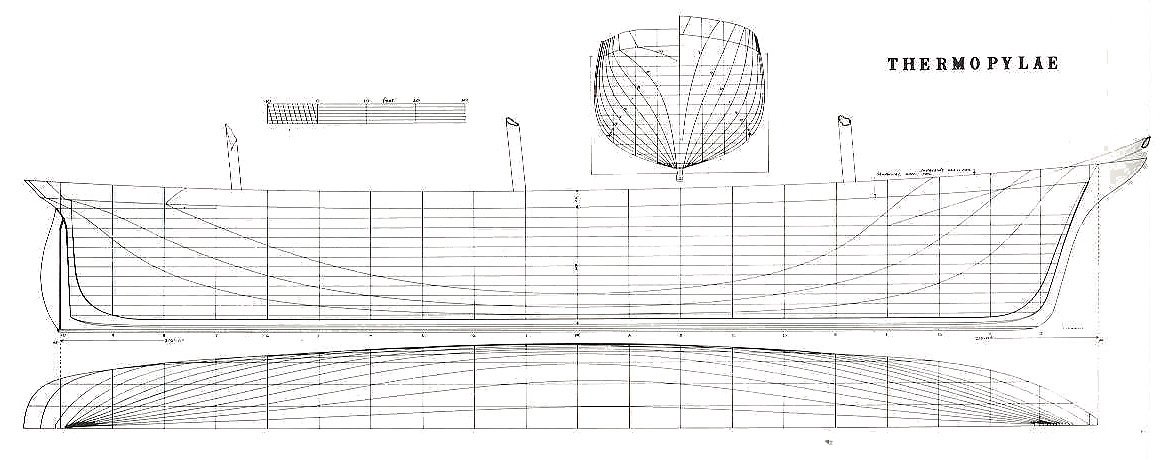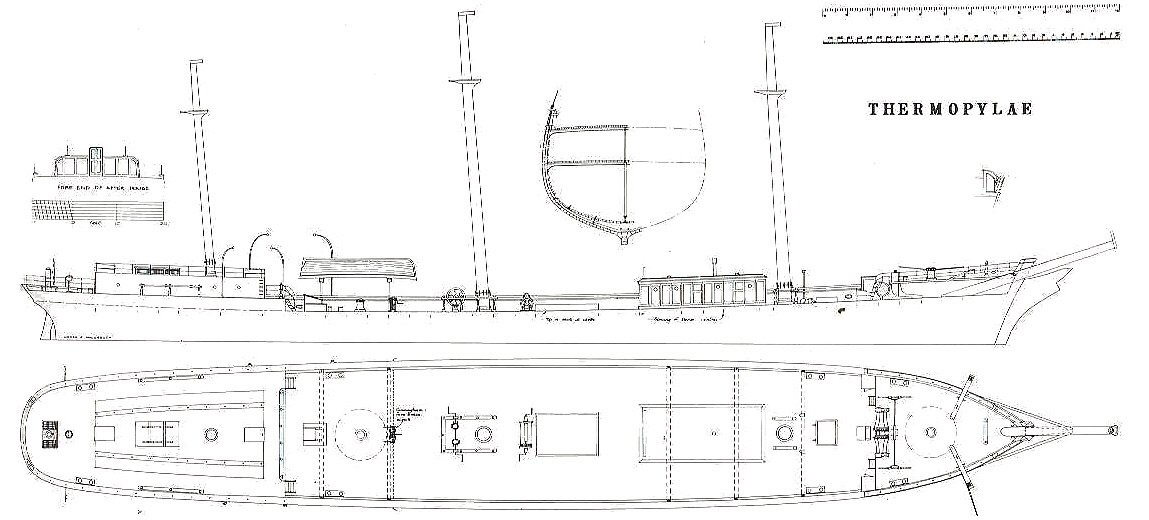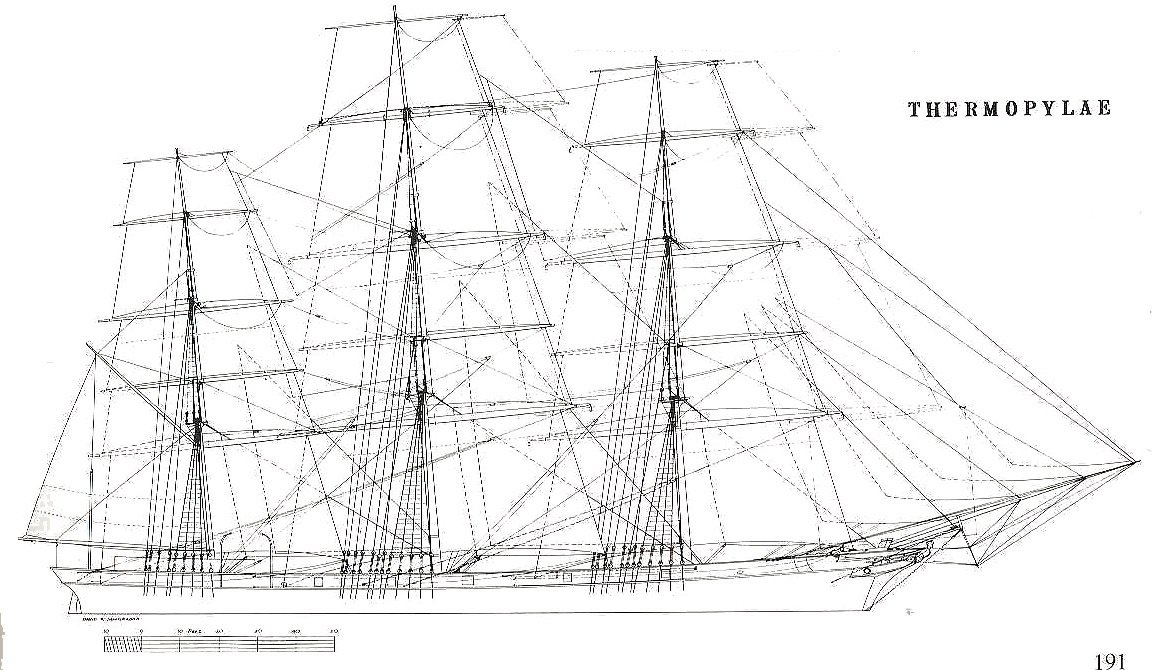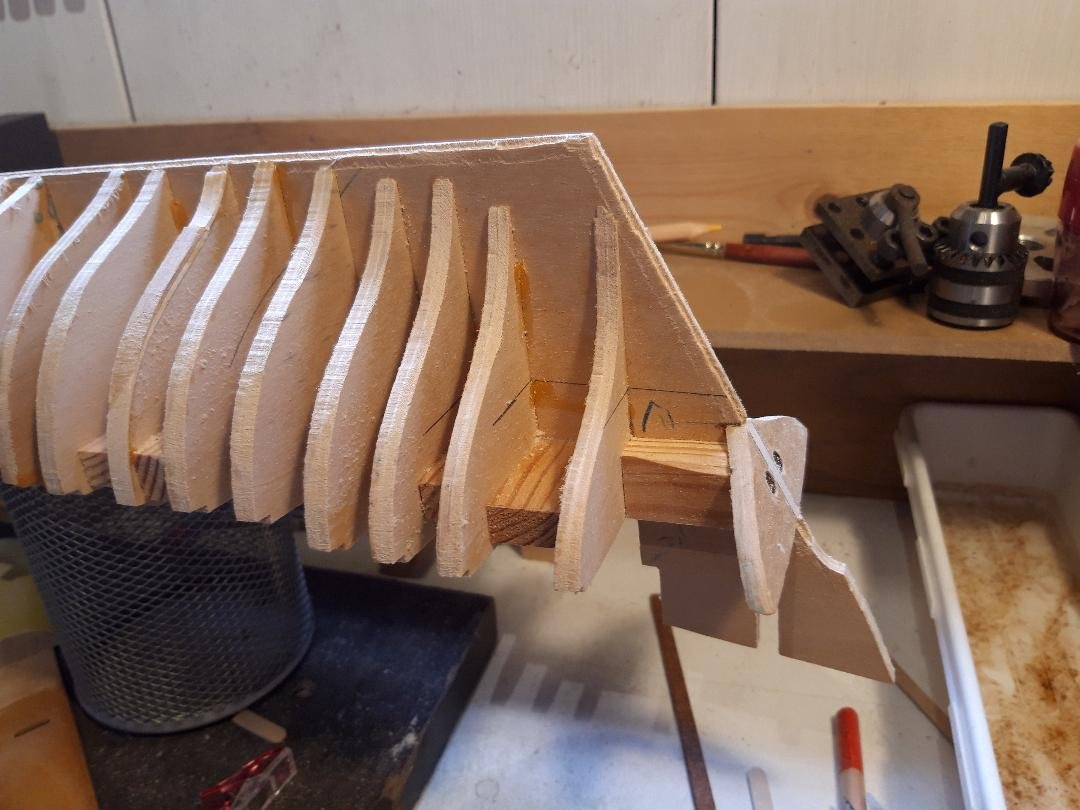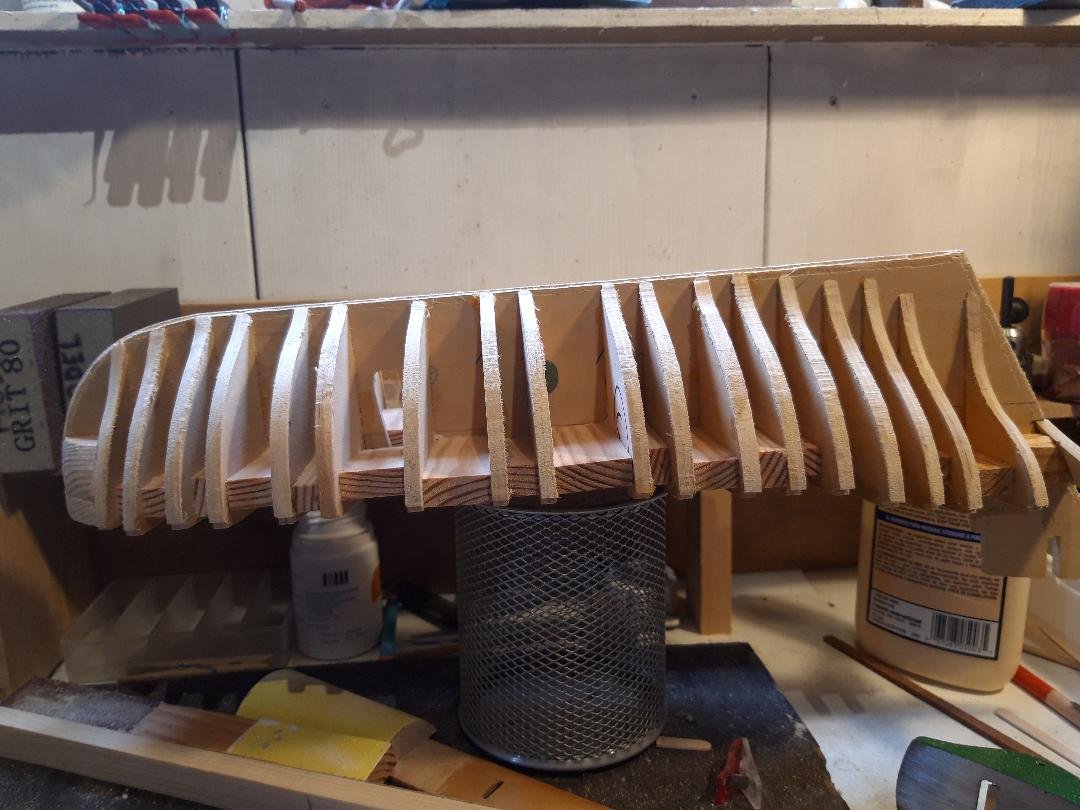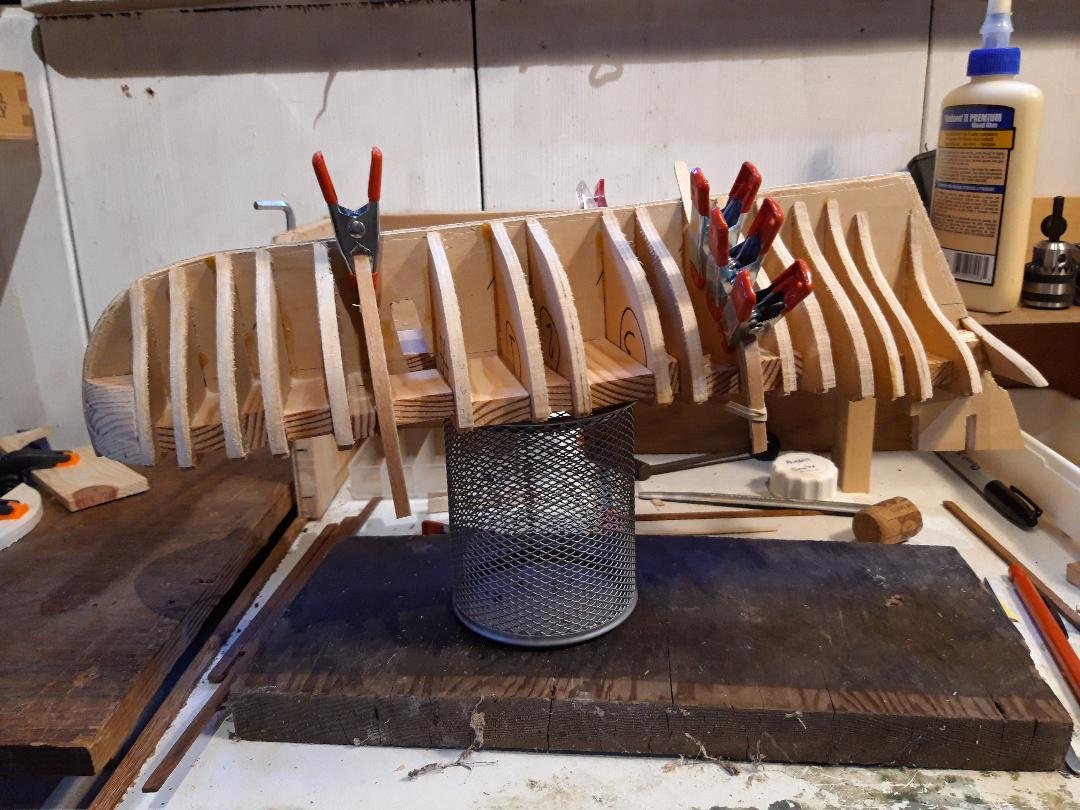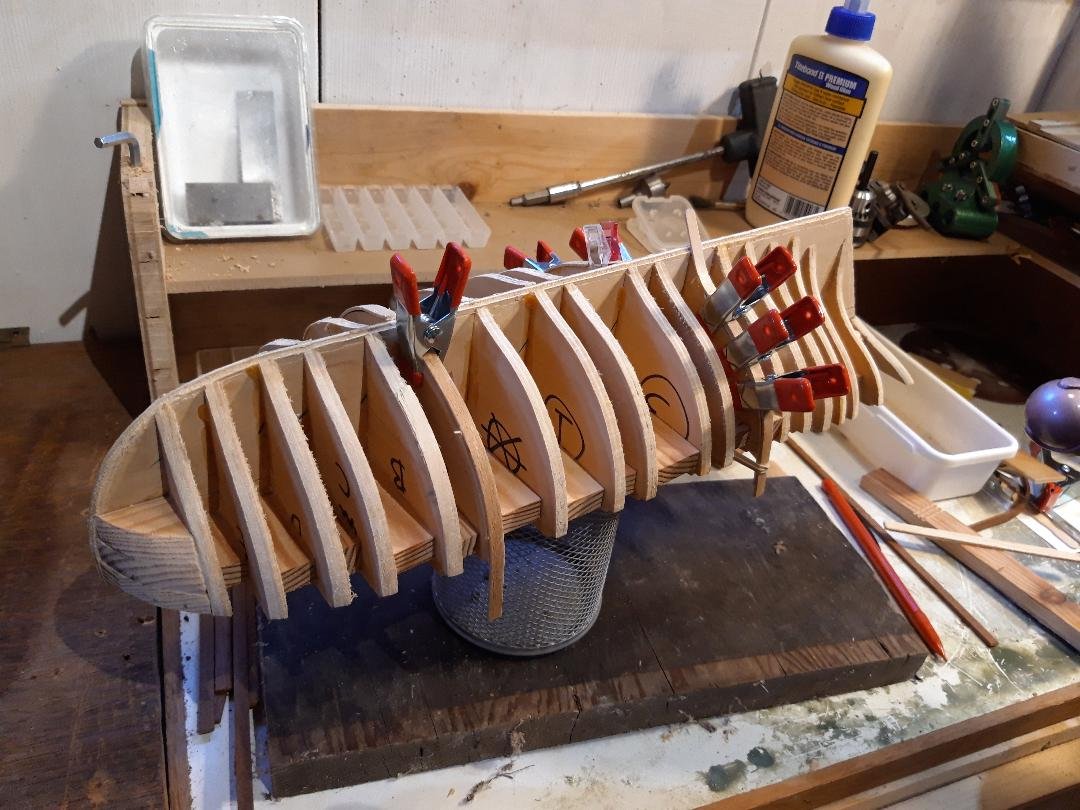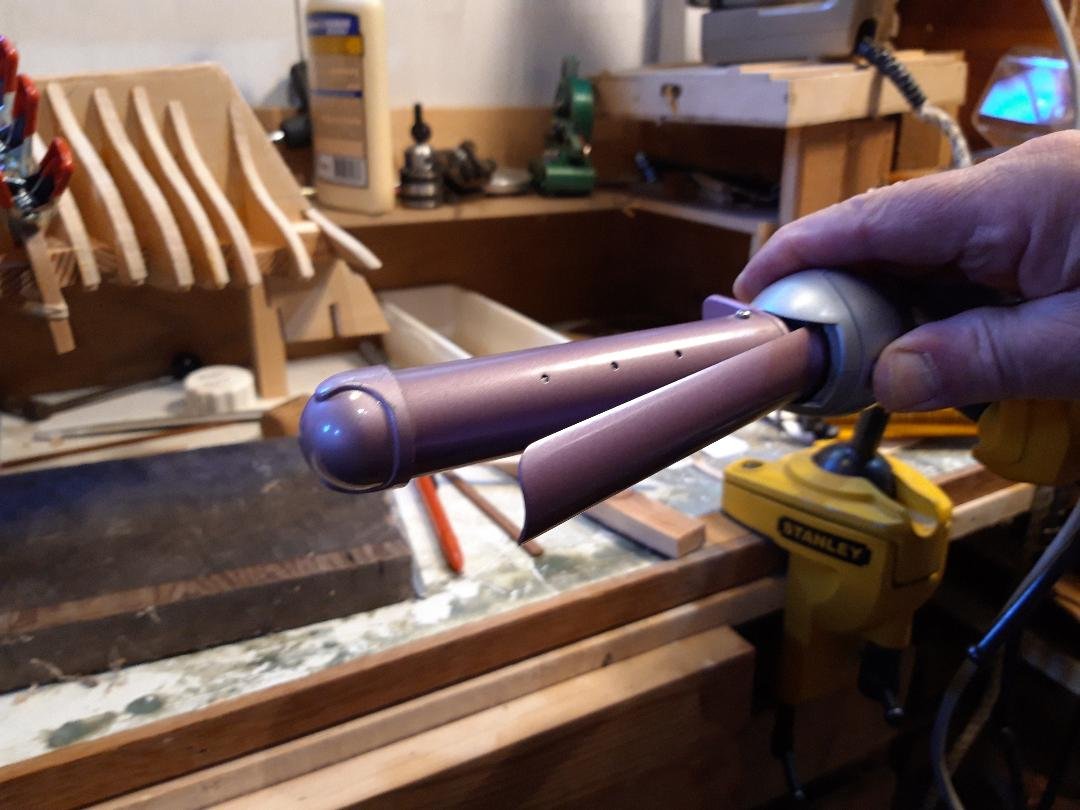-
Posts
3,044 -
Joined
-
Last visited
Content Type
Profiles
Forums
Gallery
Events
Everything posted by bruce d
-
Double sided tape works well for this. If you are using a slitting saw blade it's probably best to raise it higher than normal practice and use a slow feed rate. To release the brass from the sacrificial wood without distortion can be a problem, I soaked the whole assembly for a day or so in white spirits to loosen the bond. Plywood may fall apart after this which is the best result.
- 1,129 replies
-
Looking good, Kevin. BTW, I watched your video on clamps earlier and learned a couple of things. Thanks!
- 1,129 replies
-

NAIAD 1797 by Bitao - 1:60
bruce d replied to Bitao's topic in - Build logs for subjects built 1751 - 1800
Nice work, Bitao, and thanks for showing the secret tool that makes the magic. -
-
Hello John, First, well done for doing a 'dress rehearsal' of a vital process. Just a point concerning the images: it appears the grain in all three pieces is going in the same direction. When you do it for real, I believe the centre piece should have the grain running cross-ways. The direction of grain will was a primary factor in construction for the original shipwrights and will apply in many components in a serious model. The fit looks good, will watch for next steps. 👍
-
Nothing to confirm or deny, but they are there. I have high hopes for having more information soon(ish) but whether or not it will change any existing ideas about her appearance or fittings remains to be seen. Now I'm curious. Why the interest in cannon ball racks?
- 43 replies
-
- mediator
- first build
-
(and 1 more)
Tagged with:
-

Swivel guns
bruce d replied to tlevine's topic in Discussion for a Ship's Deck Furniture, Guns, boats and other Fittings
Toni, Haven't found a rule to quote but these images below from NMM are pretty consistent. The swivels are above the rail but not so high that the crew would be impeded in reloading. As I understand it, and as is illustrated in these contemporary models and plans, the swivels most deadly use was in firing down into an attacker and the quick working of the guns depended on the crew being able to get on with it without acrobatics. Since they are so often found mounted outboard of or directly above the rail, they really couldn't be any higher. So (at least the way I am going to mount mine after asking myself the same question) - the swivel guns will be at approximately shoulder height relative to the deck. Atalanta (1775); Warship; Sixth rate; sloop; 16 guns | Royal Museums Greenwich (rmg.co.uk) Warship (1740); Sixth rate; Sloop; Brigantine; 12 guns | Royal Museums Greenwich (rmg.co.uk) Fighting vessel; Bomb vessel | Royal Museums Greenwich (rmg.co.uk) Warship; Sixth rate; 24 guns | Royal Museums Greenwich (rmg.co.uk) Warship; Frigate; Amazon class; Fifth rate; 32 guns | Royal Museums Greenwich (rmg.co.uk) Escorte (captured 1757) | Royal Museums Greenwich (rmg.co.uk) Senegal (1760) | Royal Museums Greenwich (rmg.co.uk) As a by-the-by, I believe there were also occasions when a swivel gun was jury-rigged to fire from a mast-head. I am so glad I didn't live in the 18th century. -
Steve, welcome to MSW from southern England. That is a very nice model, looking forward to seeing more. Regards, Bruce
-
Well spotted Allan. Digging in records shows that she was fitted with a capstan while in Portsmouth dockyard between May and June 1745. It was at this time the lines were taken off and despite seeing pumps and stoves we do not see a windlass. Mediator had been roughed up when captured by a French privateer off the Needles and then suffered further bruises when re-taken by the RN the following day. She was needed back in convoy service urgently and repairs were quickly authorized plus instructions given to record her lines. Despite the artist meticulously recording other details (such as the miss-matched stern windows which reconcile with hasty repairs) I saw no hint of a previous windlass in the correspondence or the plans. If it hadn't been for the capture by the privateer and re-capture the following day there would be no drawings. NMM describes her as 'purchased' but this is not entirely accurate. She was owned by a RN officer who bought her in the West Indies and contracted her to the RN for the supply crisis. She foundered and was lost at Ostend in a storm just a few weeks after release to duty from Portsmouth dockyard. I will eventually write the tale and post it.
-
Eberhard, The keel is a little wider than the plywood former so will become a useful part of the puzzle. I am planning on tacking a dummy in place for the planking to be replaced later. Also, I am counting on being able to finish the rabbet with the dummy in place. Very sensible comments on the hardness of the fillers, thanks.
-
I am doing my first ever fairing of a POB model (scratch built Mediator from Jeff Straub plans). My gut feeling is that I should have fillers between some of the bulkheads where the gap is greatest and/or the lines change. The bow fillers are necessary but my lack of experience leaves me seeking advice about the rest of the hull and stern. As the shape emerges from my sanding efforts it seems now is the time if it is going to happen. Common sense says to use wood softer than the bulkheads. Are there any negatives or cautionary tales about bulkhead-fillers? Thanks in advance, Bruce
-
I agree it would be nice on one level but as Steven says it would be complicated. I believe it is a good idea for everyone to put their location, at least their country, in the spot below their avatar. This helps. What are you looking for?
-

11 anni di modellismo d'arsenale
bruce d replied to MICHELE PADOAN's topic in New member Introductions
Michele, welcome to MSW. Those models are magnificent and I hope you will share a build log with us. I am with everything of course but especially your carving. May I ask what is your method? Bruce -
Thanks Guy, cautionary tales are always welcome in this thread but I have already been ambushed by printer-woes, see post#2, and it is possible they have surfaced again (but I am getting a bit ahead of myself). Fairing is moving ahead and has required a bit of fettling: there are a few low spots and I have been adding material. There is something about bulkhead number 5 that is odd. On both the Mark 1 Mediator, the one that I started and then stopped, and now on this second attempt, bulkhead #5 is low. I don't see how it is a printer issue as the piece is the correct height. Bulkhead #A is also affected, again on both Mk 1 and Mk 11, but far less noticeably. I was careful when cutting out the bulkheads for Mk 11 and am satisfied that the piece matched the drawing before I started assembly. Yet, here we are again. At an appropriate moment I will check the master drawings and the scans I made but ... I suggest anyone considering building Mediator leaves a bit of extra material around these two bulkheads. There is nothing obviously wrong with the shape, just that when the formers and bulkheads are assembled #5 is low by about 2mm, #A about 1mm in a short section. No biggie, just something that is avoidable. After trying a couple of different woods and bending methods I settled on using coffee stir-sticks and hair tongs. The results were perfect from my point of view because the wood, which may be birch, is of a similar hardness to the ply used for the bulkheads. This is a useful feature when sanding. I wet the stir-stick for a minute or so and then roll it around the heated tong free-hand. It is quick and effective. Clamps and rubber bands do the holding. One 'top tip' for anyone wanting to do it this way: have a look at the way the tongs were intended to be used. The tubular body of the tong heats up and the moving part that pinches the hair is spring loaded to hold the hair while drying/curling. This moving 'finger' gets heated by being in close contact with the hot tube. Put the wood to be bent between the two hot pieces, making sure the wood stays in close contact with the 'finger', and it heats the wood from both sides making a neater and more predictable result. Now if only I had some hair to try out my new skills ...
- 43 replies
-
- mediator
- first build
-
(and 1 more)
Tagged with:
-
Hello Giuseppe and a warm welcome to MSW from the UK.
-
Nils, you would have many friends drop in if you do that! The fish look as good as the boat, well done.
-
Kevin, that is looking good. It is a beautiful model.
- 1,129 replies
-
You will check in with us occasionally, just to let us know everything is alright? 🤐
- 1,129 replies
About us
Modelshipworld - Advancing Ship Modeling through Research
SSL Secured
Your security is important for us so this Website is SSL-Secured
NRG Mailing Address
Nautical Research Guild
237 South Lincoln Street
Westmont IL, 60559-1917
Model Ship World ® and the MSW logo are Registered Trademarks, and belong to the Nautical Research Guild (United States Patent and Trademark Office: No. 6,929,264 & No. 6,929,274, registered Dec. 20, 2022)
Helpful Links
About the NRG
If you enjoy building ship models that are historically accurate as well as beautiful, then The Nautical Research Guild (NRG) is just right for you.
The Guild is a non-profit educational organization whose mission is to “Advance Ship Modeling Through Research”. We provide support to our members in their efforts to raise the quality of their model ships.
The Nautical Research Guild has published our world-renowned quarterly magazine, The Nautical Research Journal, since 1955. The pages of the Journal are full of articles by accomplished ship modelers who show you how they create those exquisite details on their models, and by maritime historians who show you the correct details to build. The Journal is available in both print and digital editions. Go to the NRG web site (www.thenrg.org) to download a complimentary digital copy of the Journal. The NRG also publishes plan sets, books and compilations of back issues of the Journal and the former Ships in Scale and Model Ship Builder magazines.






